Poisoners on the payroll, or How poison experts worked in the KGB and the CIA
Categories: World
By Pictolic https://pictolic.com/article/poisoners-on-the-payroll-or-how-poison-experts-worked-in-the-kgb-and-the-cia.htmlFor most of us, the elimination of political opponents with the help of poisons is something from the Middle Ages. And so it is — along with the sunset of the Renaissance, the era of the great poisoners also passed into the past. She left to return to the 20th century, when the special services of the whole world began to actively use poisons. Who and how were the KGB and the CIA persecuted in the interests of state security?
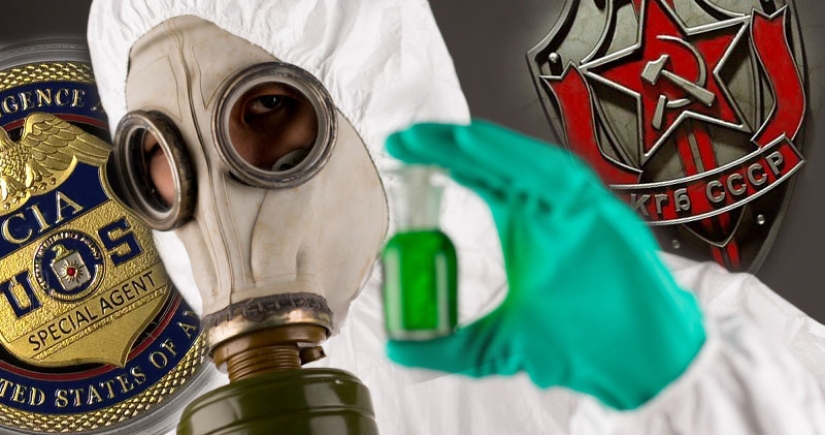
We can say that the reason for pride is more than doubtful, but the best experts on poisons and the most skilled poisoners worked in the KGB, and before that in the NKVD and the MGB. Abroad, where the enemy could not be captured, tortured and shot, an inconspicuous man in gray appeared, after a meeting with which the opponent successfully died, sometimes immediately, and sometimes after a short illness.
Grigory Mayranovsky (first from left) with colleagues in the NKVD
Of course, all effective Soviet poisons were created by special services agents not in the kitchen. In 1937, the secret toxicological laboratory of Professor Grigory Mayranovsky was founded, which belonged to the 12th department of the NKVD. Like the department itself, the laboratory was supervised by General Pavel Sudoplatov, a well-known intelligence officer and saboteur.
When in 1951 Mairanovsky was arrested as "a cosmopolitan and a conspirator without a home", he told during interrogations that poisons for special operations were tested on people sentenced to the highest degree. In 1953, the arrested Sudoplatov confirmed his words.
From the disgraced general of state security, the investigators learned about four cases of eliminating unwanted poisons that occurred in different countries of the world. In all cases, curare poison was used, prepared and packaged by Mayranovsky and his subordinates. An American double agent, a Polish Jewish defector who had access to state secrets and two Ukrainian nationalists were poisoned. However, Mairanovsky did not trust anyone and personally went on assignments.
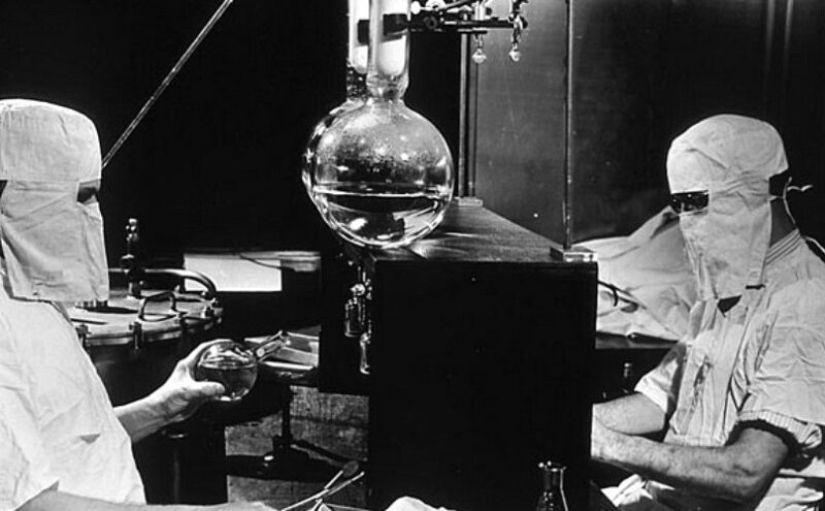
Professor Mayranovsky left the camp only in 1962. Ironically, having been arrested under Beria, the main poisoner was not amnestied after his exposure and execution, but continued to sit as an "accomplice of Beria". After his release, he did not live long and died under very strange circumstances, with symptoms similar to poisoning.
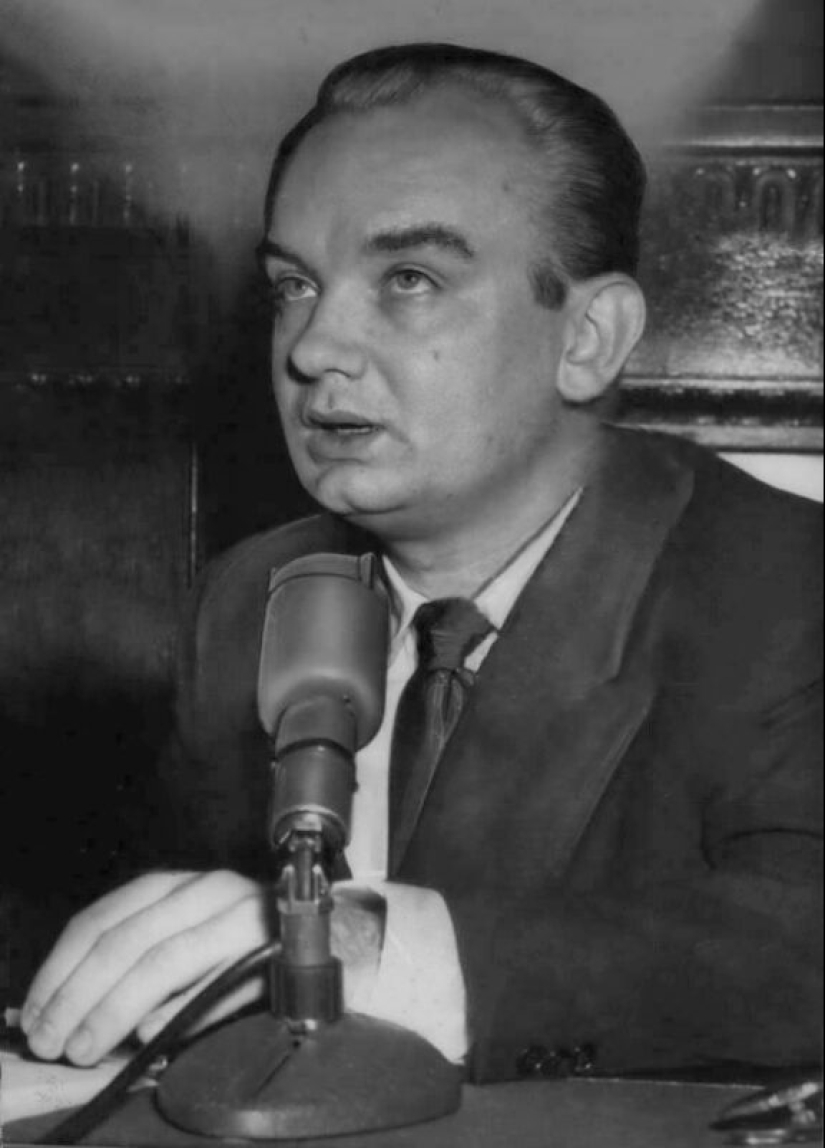
Nikolai Khokhlov
Khokhlov was immediately taken into circulation by the Munich office of the CIA. The agent confessed to the Americans that one of his tasks was to kill Kerensky. At the disposal of the KGB killers were small-caliber silent pistols with poisoned bullets, which worked flawlessly.
Nikolai Khokhlov was a valuable cadre for the CIA, so he was transported from Germany to the United States, to Washington, out of harm's way. But the long arms of the Soviet special services reached out to the traitor across the ocean. At one of the invited emigrant evenings, someone mixed radioactive thallium in Nikolai's coffee in a lethal dose.
Khokhlov fell ill immediately after the party, but, oddly enough, did not die. American doctors helped him cope with a severe form of radiation sickness. Stubborn and embittered, the former Soviet intelligence officer annoyed his former colleagues for a long time. At one time, he even served as an adviser to the South Vietnamese President on the fight against the Vietcong.
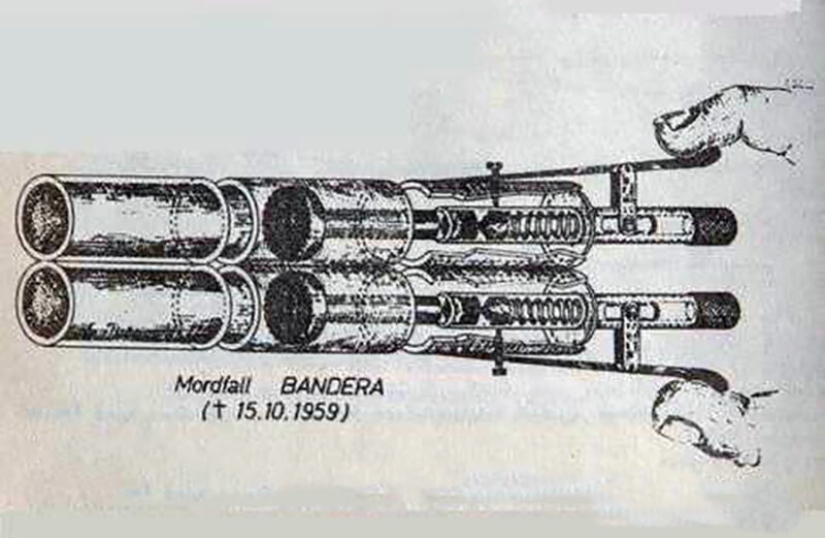
Diagram of the pistol with cyanide ampoules, from which Rebet and Bandera were killed
If Nikolai Khokhlov was engaged in Russian emigrants, then Bogdan Stashinsky specialized in Ukrainian nationalists in Europe. He was more successful in his business — in 1957 he eliminated the head of the foreign OUN Lev Rebet, and in 1959 — Stepan Bandera himself.
The murder of Rebet went like clockwork and the experts decided that he died of a heart attack. But it was not possible to deal with Bandera so beautifully — the poisoning was given out by the smell of cyanide from the body. The details of the two murders became known from Stashinsky himself, who, like Khokhlov, decided to tie up with the Soviet past and surrendered to the CIA.
The US intelligence service did not lag behind the Soviet one in terms of activity and even surpassed it in some ways. The CIA had more money, which means more opportunities, and the principles, if possible, were even less than the KGB. Unencumbered by any conventions and prejudices, the agents of the intelligence agency collaborated with the most disgusting butchers of the planet, achieving their goals by any means.
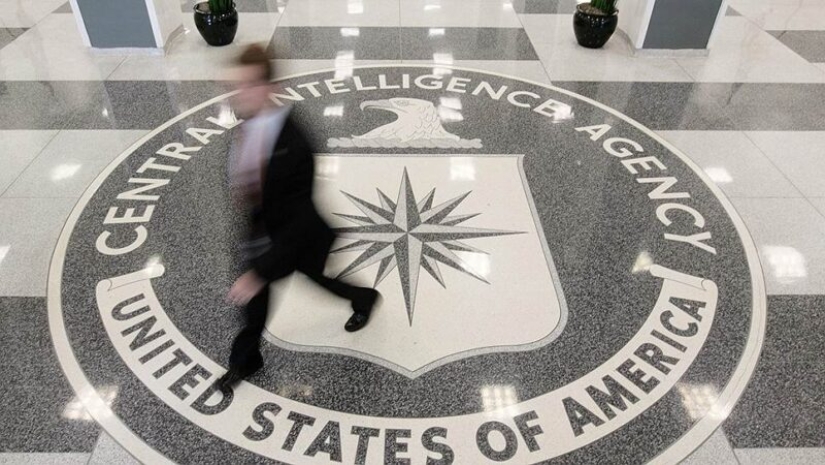
The CIA did not like poisons and acted rudely and cynically. It has always been easier for Americans to pay thugs to riddle a target with bullets than to mess with poisons and isotopes. This is how Patrice Lumumba, a Congolese politician, was shot by someone else's hands.
In the late 50s, the CIA simply had to pay attention to poisons. A little south of Florida, the state of Cuba appeared, led by Fidel Castro, who could not be eliminated just like that, impudently. For Castro, the Americans developed dozens of variants of assassination attempts, among which there are very unusual ones. Once, the Cuban leader even planned to give a scuba tank infected with tuberculosis bacillus through figureheads.
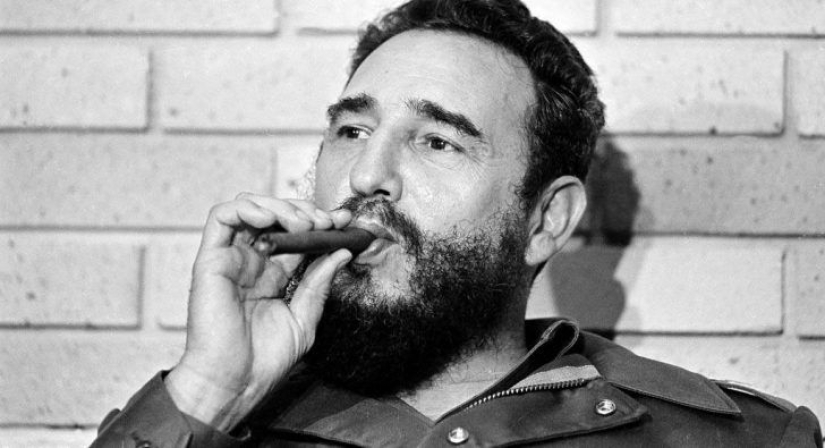
Fidel Castro
But Fidel was like a charmed one and avoided death thanks to luck or because of the incompetence of American agents. One of the attempts failed due to the fact that the ice cream with poison for Castro was frozen solid in the ice of the freezer, where it was stored by an assassin.
An attempt to use the proven Stashevsky method also failed. The CIA laboratories even produced a special pen-pistol with a bullet filled with the synthetic poison Blackleaf 40. One of his own lieutenants, whom the Americans managed to recruit, was supposed to shoot the Cuban leader. But they failed again.
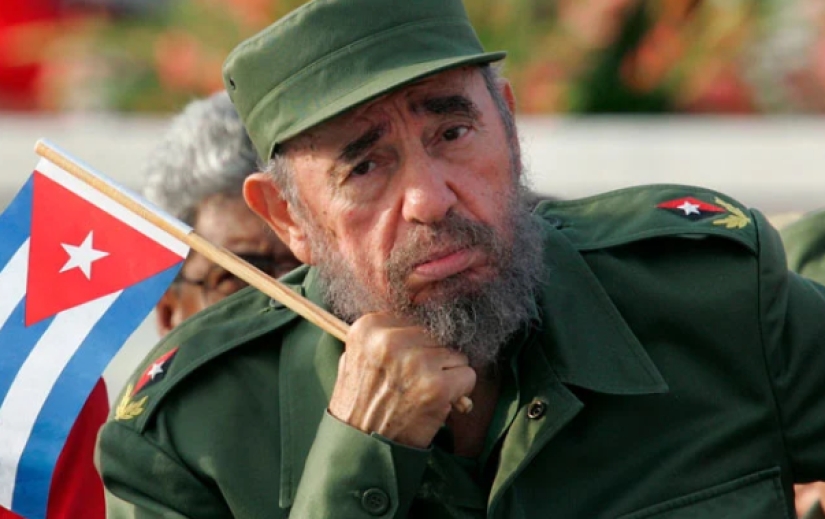
Rum with cyanide, banana pie with strychnine, a neuroleptic of sea shellfish in custard - whole books have been written about the CIA's unsuccessful attempts to poison Fidel Castro. In terms of professionalism, the Soviet killers were much superior to the American ones. Yes, they could be turned over, promising a well-fed and quiet life in the West, but they still knew their work clearly.
It is possible that it was the failures with the poisoning of Castro that led to the fact that the promising poisoning case quickly died out in the United States and by the 70s no one was dealing with poisons in the CIA. It got to the point that when a key CIA agent "Trianon" asked the curator for curare poison for himself, in case of failure, they could not immediately find him and there was a hitch. As a result, it was still prepared and transported to Moscow.
Agent Alexander Ogorodnik used the first dose to poison his fiancee, who began to suspect him of working for foreign intelligence, and took the second one himself when the KGB came for him. But the biggest stupidity associated with the CIA and poisons occurred in the French town of Pont-Saint-Esprit on Rone on August 16, 1951.
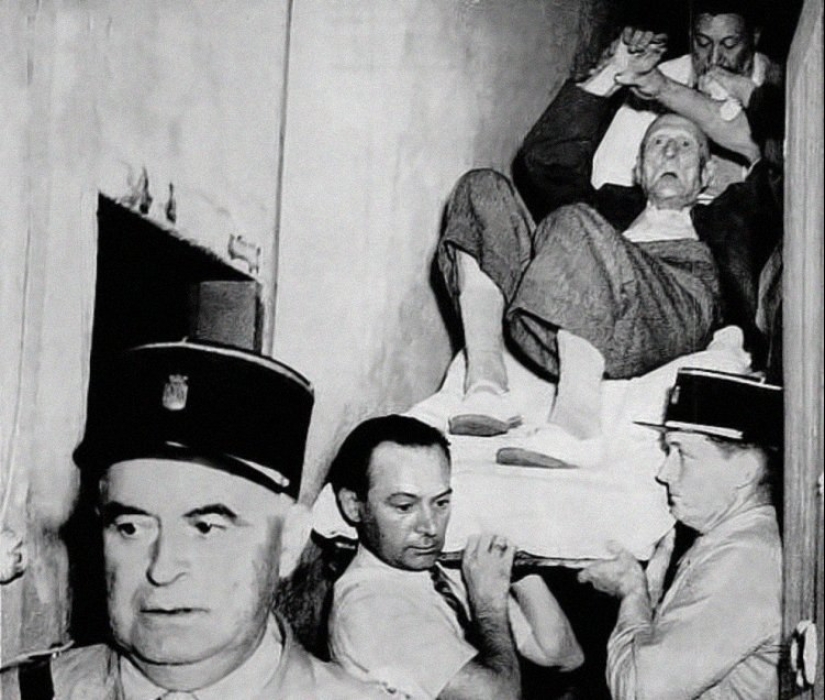
Gendarmes evacuate a distraught old man in Pont-Saint-Esprit
Hundreds of residents of a provincial town suddenly lost their minds. They began to be haunted by nightmares and hallucinations, and some even lost their instinct for self-preservation and did dangerous things. Someone jumped out of the window, someone ate enough money to clean the pipes — then they counted 7 dead and 50 who lost their minds and needed psychiatric help.

In one of the declassified CIA archives, Hank came across traces of the folder " Documents on Pont-Saint-Esprit and Frank Olson. The operation is in France. Intelligence documents. Personally into the hands of Belin-tell him that this will never come up." Unfortunately, Abarelli could not find the folder itself. Interestingly, Olson in the 40s and 50s was engaged in the study of psychedelics such as LSD in the CIA, and David Belin was in the 70s the executive director of the Rockefeller Commission, which investigated the actions of American intelligence in the postwar years.
Yes, we have collected 10 of the most unusual failed CIA attempts on Fidel Castro for you here.
Keywords: Killer | Nationalists | Poisoning | Betrayal | Special services | Fidel castro | Cia | Emigrants | Poison
Post News ArticleRecent articles

Markus Reugels is an incredibly talented German photographer who specializes in high-speed and macro photography. His photographs ...

Learn unusual and interesting facts about our planet and the creatures that inhabit it! -- >Ants, when dying, emit special ...
Related articles

In the early XX century in the Hungarian village Nagyrev formed a sort of killer syndicate consisting exclusively of women. From ...

Some people just love to watch horror movies, because it's a great way to "tickle" their nerves and get the adrenaline rush from ...

Mustache brush appeared in the late 19th century in the United States and for a couple of decades, the fashion has spread all over ...

The Japanese craftswoman has honed her skills in working with wool so much that now her crafts - felted animal figurines - look as ...